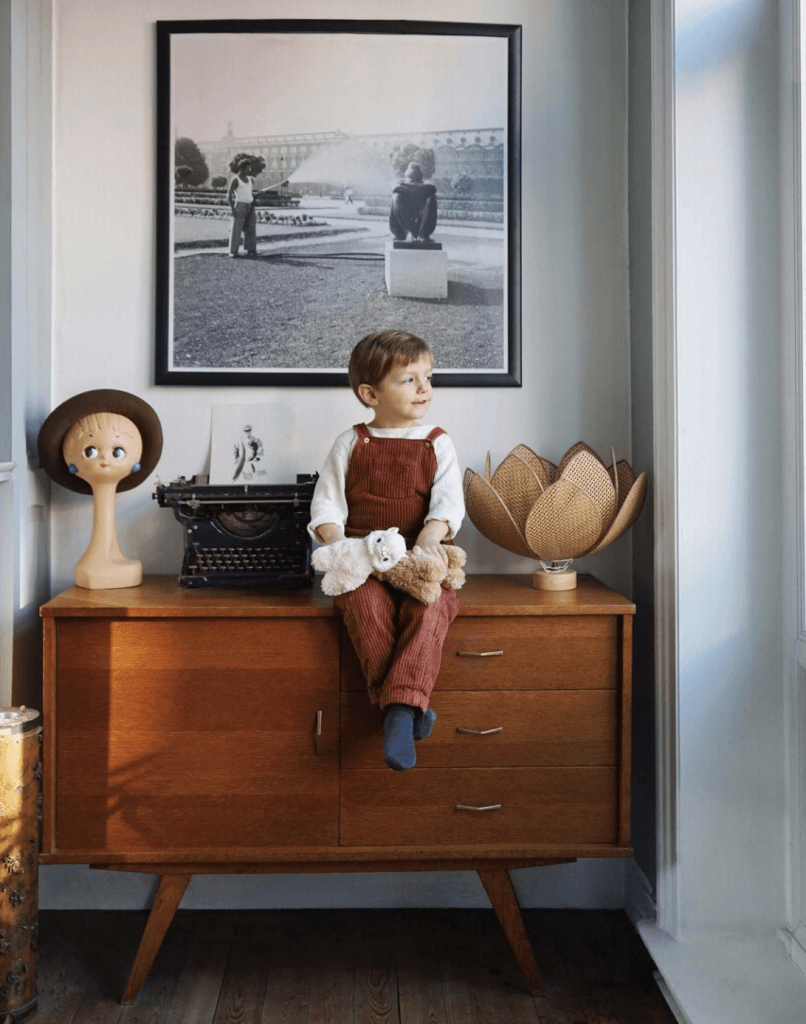Healthy Body Boundaries for Kids: Your Child Doesn’t Owe Anyone a Hug
We want our kids to feel empowered when it comes to setting limits on physical touch. They should feel able to express when they want and don’t want to be touched, and that includes goodbye kisses from Grandma. So, it’s important that we stay consistent when setting and instilling healthy body boundaries for kids.

“Let me squeeze those cheeks!”
An adult squeezed my cheeks so hard it left a red mark. This happened a lot during the holidays when I was a child. When visiting friends and family members as a shy child, I was often left feeling awkward from many of these encounters.
Part of me wanted to say something. Part of me didn’t know how to respond. So I learned how to ignore that feeling inside of me that wanted to say no.
It didn’t have a major impact on me, but now that I am a parent, I understand the importance of consent and healthy boundaries. We see stories about consent (or lack of), and you might wonder how it even got to that point.
Healthy Body Boundary Limits Start at Home
Many times it’s because as children, we weren’t taught about consent and healthy boundaries. We were told we had to hug, kiss, wave, or put up with the family member who did things that made us feel uncomfortable.
It’s important to remember that these experiences are shaping our children, and it is our job to give them the appropriate tools to handle situations that make them feel uncomfortable. Learning how to say no and how to create healthy boundaries might be what keeps your child from experiencing a traumatic event in the future.
“The younger the person, the less able they are to say ‘no’, glare at us disapprovingly, or push us away,” explains Janet Lansbury, parenting advisor and author of Elevating Child Care: A Guide to Respectful Parenting. “Young children are especially incapable of indicating more subtle discomfort.”
“Every interaction children have teaches them their place in the world, how they should be treated and how they should relate to others. Children wholeheartedly accept the level of respect they are given.”
How to Encourage and Support Healthy Body Boundaries
Here’s how you can help your child navigate this holiday season when encountering family and friends they haven’t seen often.
Explain Healthy Boundaries vs. Being Polite
How do we raise polite children while teaching them about consent and boundaries?
According to the dictionary, being “polite” means showing regard for others in manners, speech, and behavior. Nowhere does it say, being polite means having to do things you are not ready to do or don’t make you feel comfortable.
Talk with Your Child Before an Event or Gathering
Explain to your child where you’re going, who they’re going to see, and any expectations you have. See if they have any questions and answer them patiently and thoroughly. I personally like to break it down for my kids so they know what to expect.
Depending on your child, you might have to do this a few weeks before the event or do on your drive there. You know your child best. If you want to dive deeper on this, listen to episode #3 of The Mama Instincts Podcast where I share in detail how to set expectations with your children.
Offer Your Child Words to Decline Hugs or Unwanted Attention
Talk to your child about polite ways to respond when encountering someone they don’t know or when finding themselves in a situation they don’t feel comfortable.
“Educate your relatives, rather than having your child feel uncomfortable,” advises Marcie Beigel, Ed.D. BCBA-D, of New York City. “It may feel like an uncomfortable conversation but that is better than forcing your child into an uncomfortable physical interaction.”
Maybe your child is shy and doesn’t know how to respond in larger crowds or talk to people they barely know. It’s always best to be around your child so that you can intervene if necessary.
And practice at home. Playing pretend is a great way to practice body boundaries in a safe and comfortable environment. Do a little role playing with your child so they can practice how to politely but firmly decline unwanted attention. Tell them it’s perfectly ok to say no to hugs or touch. By setting expectations among family members early on, they will know not to press the issue.
See also: How to Raise a Resilient Child
Understand Your Child’s Personality
There are introverts and extroverts. Let your child be who he or she is and give the tools which will help them navigate this world.
As a child, and still to this day, I get shy around big crowds and it takes me a while to break out of my shell. Once I do, I’m really outgoing. I started noticing one of my children displaying a similar behavior. Instead of forcing her to interact with others when she wasn’t ready, I encouraged small conversations and gave her space.
Explain to your child it’s kind to say hello back when someone greets you and they can choose if you want to say hi, wave, high-five, give a hug, or whatever you and your child are comfortable with.
Be Your Child’s Advocate
If your child is hiding behind your legs when someone is trying to give them a hug, it’s because they are not ready for this kind of interaction. Be an advocate for your child, using words your child can use in the future. Explain to the adult your child needs a little more time to feel comfortable and she will come and say hi when she’s ready.
This is especially important if you have a really young child or a toddler who doesn’t understand why this stranger wants to hold him or give him a big hug. Be mindful about your choice of words, remember your child is listening and they will pick up on whatever you say about them to the other person.
Remember, it is not your job to make the adult feel comfortable, it is your job to teach your child about consent and boundaries. You know this person is coming from a good place and has good intentions, and your child will see that in your behavior and realize this is a safe person.
See also: 5 Phrases to Inspire & Encourage Your Child
Model Politeness AND Healthy Boundaries
We can preach it all day long, but our children learn best when we model the behavior we want them to display. Be kind and polite to others, don’t say yes when you mean to say no.
Don’t Let Others Make You Doubt Your Parenting Choices
With holiday gatherings often comes unsolicited advice from family and friends. While they mean well, most of the time, they simply don’t know your child the way you do. I always thank people for their advice, even if I didn’t ask for it. I analyze it and see if there’s anything of value, then I take what I can use and discard the rest.
There’s a reason why there are so many parenting styles; we are all different. It’s part of being human! Just because something worked for one child doesn’t mean it will work for yours. Stay open to advice, but touch base with your intuition.
You are the parent of your child for a reason.

